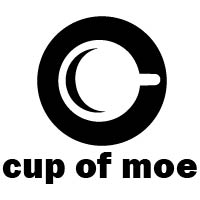We may earn money or products from the companies mentioned in this post.
1985 sci-fi horror flick “Lifeforce” marvelously pairs vampire aliens with a smattering of genres. The Tobe Hooper-directed film begins as a straightforward sci-fi movie, morphs into a gothic vampire tale, Bolstered by a magnificent score, exquisite special effects, and a memorable plot, it’s an underrated masterpiece.

A rescue team on the space shuttle Columbia recovers the Churchill, its interior heavily charred, while the cases housing the alien bodies remain untarnished. Upon recovery, the alien bodies are whisked to the European Space Research Centre in London. Before the first dissection, the female alien (Mathilda May) awakens and sucks what’s apparently the lifeforce out of a guard. Space Girl then flees the research centre.
Col Tom Carlsen (Steve Railsback), lone survivor of the ill-fated Churchill lands in an escape pod in Texas. He’s flown to London and interrogated about the tragedy which befell his crew. Dr. Fallada (Frank Finlay) enlists SAS Col. Colin Caine’s (Peter Firth) assistance in tracking down Space Girl. It’s here where “Lifeforce” takes a drastic tonal shift, the first of many. Carlsen exhibits a psychic connection with the female alien who, it turns out, is a vampire.
“Lifeforce,” begins as a straightforward sci-fi film with ship interiors plucked almost out of 1979’s “Alien.” With a screenplay penned by Dan O’Bannon, writer of “Alien,” this should come as no surprise. But what begins as standard science fiction fare morphs into a gothic vampire tale, segues into a supernatural mystery thriller, and finally culminates in an epic zombie apocalypse. There’s even a sidequest featuring Patrick Stewart as Dr. Armstrong, head of a psychiatric hospital in Yorkshire.
Yet despite the plentiful tonal shifts, “Lifeforce” maintains cohesion. This largely derives from the diligent establishment of lore. There’s a clear logic to the body jumping, and the process of searching for Space Girl proves methodical. Likewise, as the film progresses, the aliens’ goal becomes clear. During its riveting finale, the awe-inspiring vampire spaceship design emerges as not merely for show, but intentional.
Top-notch acting further chisels a clever cinematic romp. From the onset, Railsback plays Col. Carlsen with a deranged air, almost the way it’s clear from the opening moments of “The Shining” that Jack Torrance (Jack Nicholson) is completely unhinged. “I almost have the feeling I’ve been here before,” Carlsen marvels while boarding the alien spacecraft. Peter Firth plays the role of investigator with an unrivaled zest.
However, Frank Finlay as Dr. Hans Fallada steals nearly every scene he’s in. The death-obsessed biochemist quickly accepts the notion of space vampires. “I’ve killed one of them,” Dr. Fallada reveals to Caine and Carlsen. “How did you kill him, Fallada, how?” Caine wonders. “The Old way, Carlsen. A leaded metal shaft penetrating not through the heart but through the energy center two inches below the heart. Not steel, but leaded iron.” This rapid embrace of the supernatural lends “Lifeforce” much of its charm.
Based on the 1976 Colin Wilson novel The Space Vampires, a title conjuring up schlocky book covers, “Lifeforce” manages to avoid bargain-basement execution. Instead, it’s a technical masterpiece, with superb special effects a la John Dykstra. Renowned composer Henry Mancini provides a commanding auditory backdrop, aided by the London Symphony Orchestra. Indeed, “Lifeforce” spared no expense. Its $25 million USD budget shows.
1985’s “Lifeforce” begins as a solid sci-fi flick, transforms into a vampire story, takes a detour through supernatural thriller territory, and finally plunges into full-on zombie apocalypse in the epic third act. The premise of space-dwelling vampires is thought-provoking, and complemented by strong acting, lush special effects, and an orchestral score, it’s a unique, engaging watch. Ultimately, “Lifeforce” is one part sci-fi with a dash of horror, side of vampire noir, and dripping with 80s cheese which makes this an irresistible not-so-guilty pleasure.
This post may contain affiliate links. We are a participant in affiliate programs such as the Amazon Services LLC Associates Program, an affiliate advertising program designed to provide a means for us to earn fees by linking to Amazon.com and affiliated sites. However, all products are thoroughly tested and reviews are honest and unbiased.
